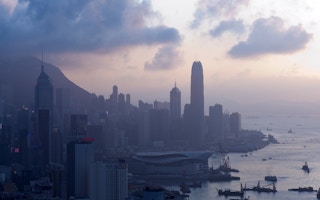The much predicted onset of another global downturn is going to coincide with increased economic and social costs associated with climate change. Climate change is already having a real and significant impact on the global population, and conditions are only predicted to worsen over time, according to a new UBS report highlighting the high costs of climate change to global middle class.
To continue reading, subscribe to Eco‑Business.
There's something for everyone. We offer a range of subscription plans.
- Access our stories and receive our Insights Weekly newsletter with the free EB Member plan.
- Unlock unlimited access to our content and archive with EB Circle.
- Publish your content with EB Premium.
“Climate change: a risk to the global middle class” is the first report measuring the impact of climate change and its effects on global economic performance. Estimated at around one billion people worldwide, and with substantial assets and political influence, the middle class is key to social order and economic growth. Given this group’s size, spending power and dynamism, the erosion of middle-class wealth through climate change threatens both economic and socio-political stability. But, the same time, the middle class also represents the greatest opportunity for change.
In a study of middle-class consumption in 215 cities around the world, UBS analysts found spending priorities were noticeably different in cities most at risk from climate change such as Los Angeles, Tokyo and Shanghai. The report says middle-class households are already changing their lifestyles in the cities most exposed to hotter temperatures, rising sea levels and extreme weather such as storms and floods. The financial costs of climate-related events for both governments and taxpayers are already apparent. But those added costs of climate change are set to rise further and impact on global economic health.
In places with high risks of climate-related shocks, people spend more on the upkeep of their properties. But some homes are likely to decrease in value, with certain places become less appealing to live, eating into wealth, the report said. Efforts to adapt to changing climate conditions - which remain modest and sporadic among the middle class - will also bring new costs.
“
If the effects of climate change significantly hurt the middle class, the inevitable reaction should in turn elicit a strong response from policy makers.
In addition, inadequate infrastructure and health care systems increase the need to rely on emergency government support when disasters strike. The report argues that this is likely, even in the richest of countries. In many cases government will not be prepared for disasters and will not have the resources to help. This is set to become a significant additional drain on resources for the middle class as they are forced to face their own remediation costs.
Most of the global middle class lives in Southeast Asia and the region that has experienced the fastest urban population growth in recent years. But 91 per cent of weather-related losses in Asia are uninsured compared with 32 per cent in the United States, which had the highest level of insurance penetration in the study sample.
The report also said climate-driven population shifts into urban areas have the potential to create and exacerbate conflict, as in Syria. In the course of five years of drought starting in 2006, Syria lost 85 per cent of its livestock and saw crop production plummet, child malnutrition worsen and the subsequent migration of 1.5 million residents from rural to urban areas. These conditions led to protests, which ultimately escalated into civil war, according to UBS.
However, the political and social clout of middle-class populations means their vulnerability to climate change risks should translate into pressure on governments to tackle global warming. If the effects of climate change significantly hurt the middle class, the inevitable reaction should in turn elicit a strong response from policy makers.
In 2000, nearly half of the global population of 6 billion people lived in cities; the United Nations expects this figure to rise to 60 per cent by 2025. Such climate-driven population shifts have the potential to create and exacerbate conflict. The US Department of Defense argues that in already volatile situations climate change can act as a “threat multiplier,” intensifying existent hostility and tensions.
Given global interconnectedness, even localized climate-related events have the potential to undermine the world economy and become a source of increased conflict.
The report can be found here.
Richard Welford is chairman, CSR Asia. This article originally appeared on CSR Asia Weekly.











